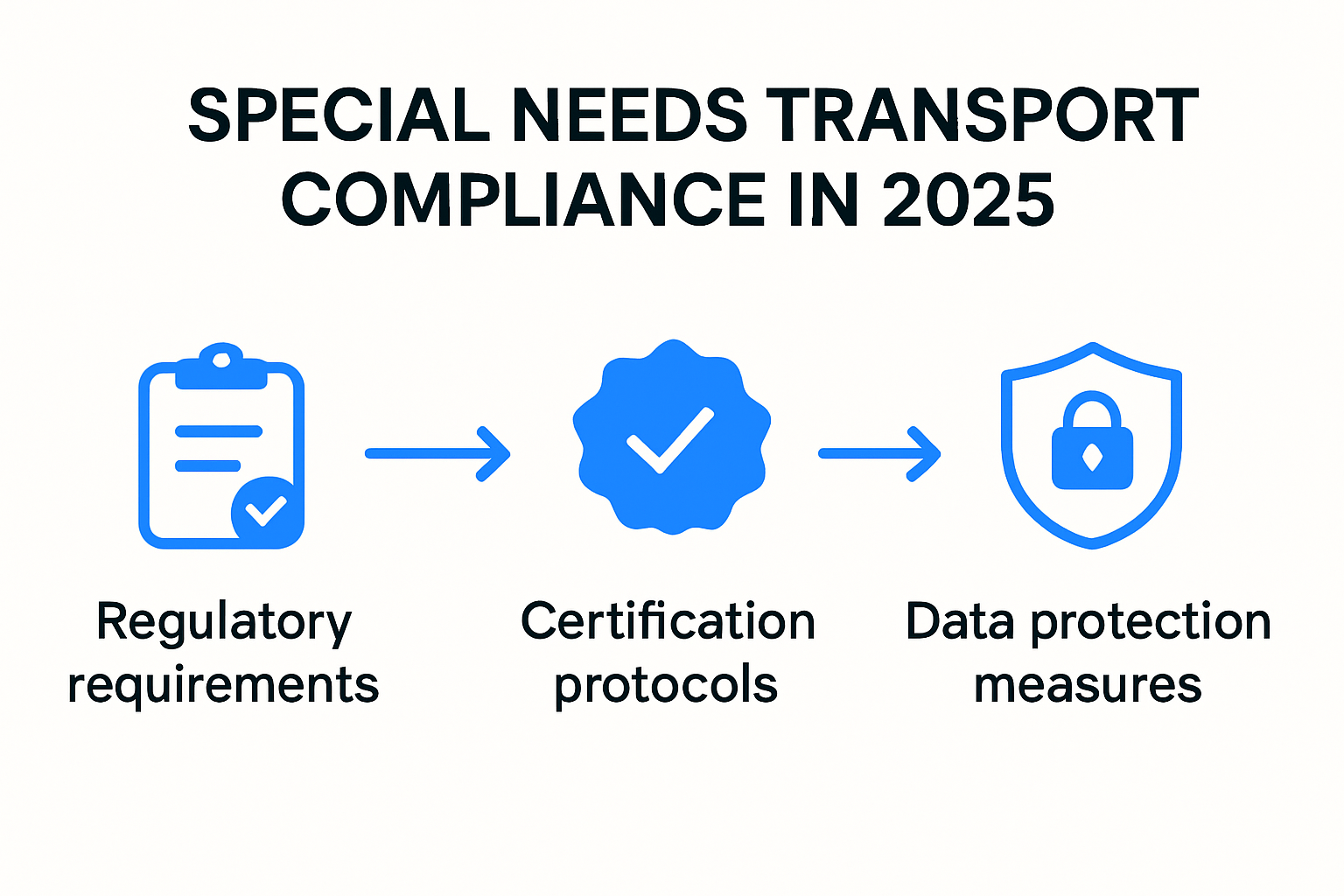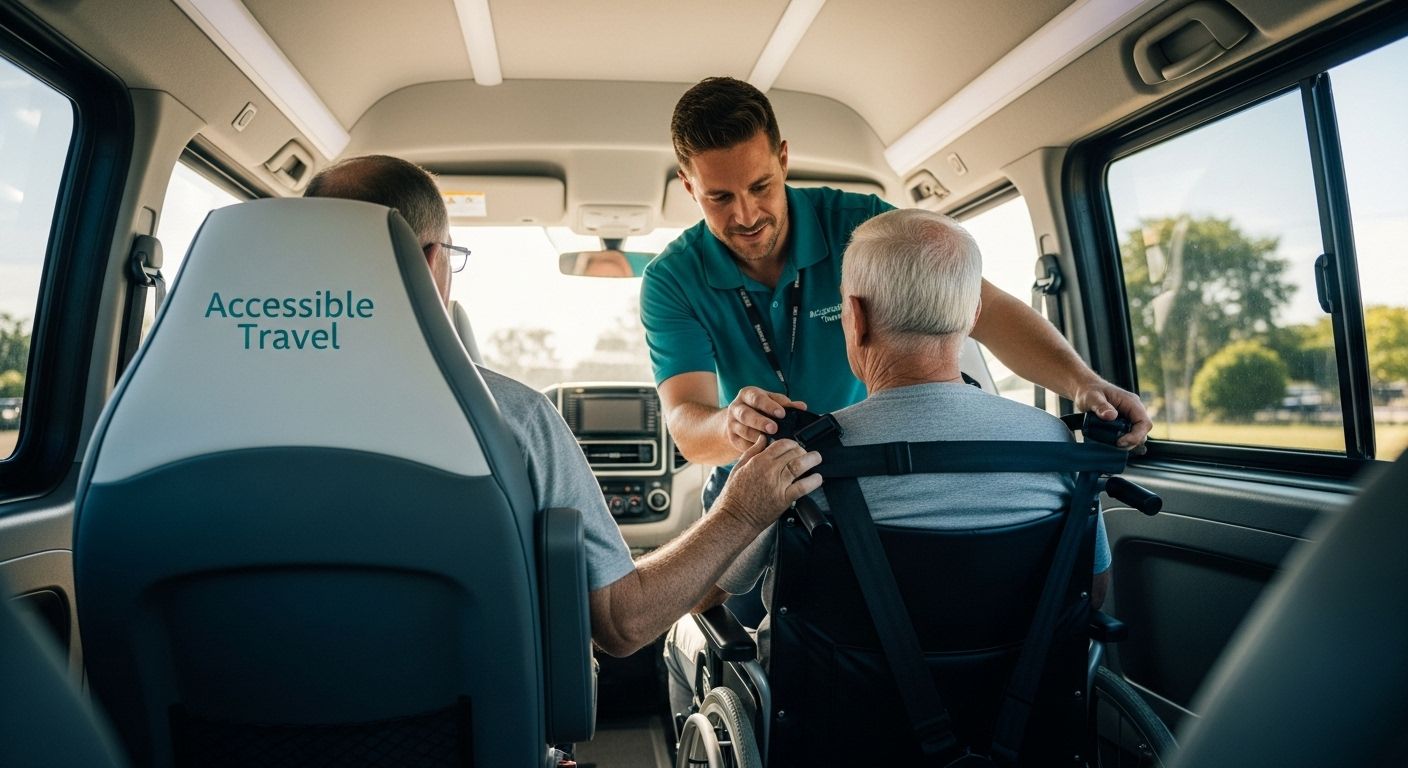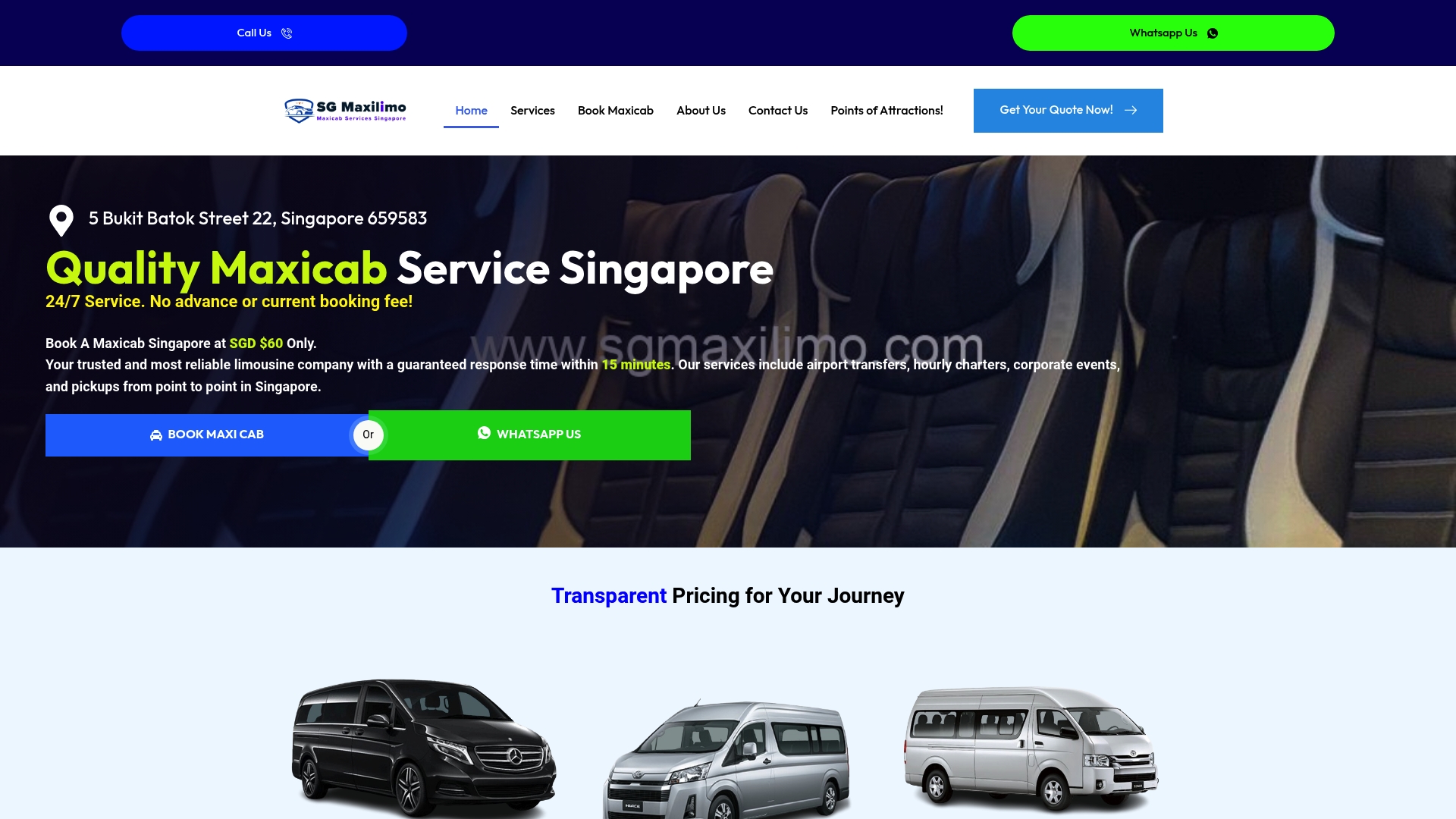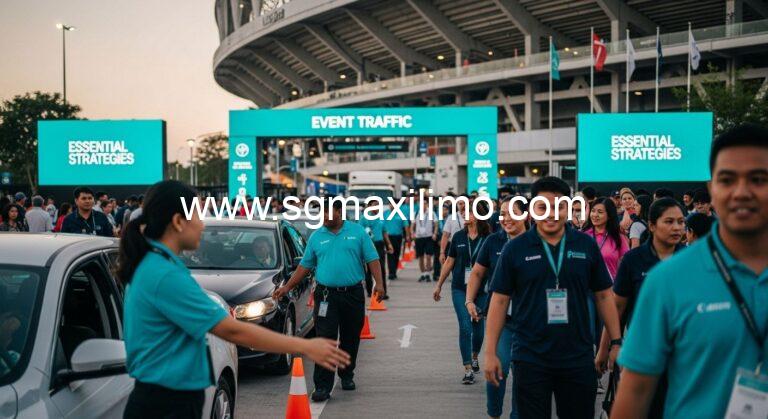Best Solutions for Transport for Special Needs 2025
Discover the best transport for special needs in 2025. Learn accessible options, legal guidelines, and tips for safe travel with expert advice.

Finding the right transport for special needs is changing fast. More than 2.7 million Americans rely on accessible vehicles every year and that number is growing. You might think ramps and lifts are all it takes to make a difference. Turns out, the real breakthrough is happening behind the scenes with smart tech, dynamic support, and powerful safety standards coming together to deliver a level of comfort and independence most people never expected.
Table of Contents
- Key Features Of Transport For Special Needs
- Choosing The Right Service For Your Needs
- Legal Guidelines And Safety Standards In 2025
- Tips For Hassle-Free And Accessible Travel
Quick Summary
| Takeaway | Explanation |
| Customize vehicles for accessibility | Adaptations like ramps and securement systems are essential for wheelchair users. |
| Assess individual mobility needs carefully | Evaluate personal capabilities and requirements to select the right transportation solution. |
| Evaluate service provider capabilities | Ensure providers have necessary vehicle adaptations, trained drivers, and safety certifications. |
| Plan travel in advance | Communicate specific needs clearly to transportation services well before the trip. |
| Leverage technology for support | Use apps for real-time tracking and communication to enhance the travel experience. |
Key Features of Transport for Special Needs
Special needs transportation requires specialized solutions that go beyond standard mobility services. The right transport approach can significantly improve independence, safety, and quality of life for individuals with diverse accessibility requirements.
Customized Vehicle Adaptations
Accessible transportation starts with vehicle modifications tailored to specific mobility challenges. Wheelchair-compatible vehicles represent a critical component of special needs transport. According to National Mobility Equipment Dealers Association, specialized vehicles incorporate critical adaptations like lowered floors, reinforced wheelchair restraints, and advanced lifting mechanisms that enable seamless entry and exit for passengers with mobility limitations.
These adaptations often include:
- Ramp and Lift Systems: Hydraulic mechanisms allowing smooth wheelchair access
- Securement Technologies: Advanced restraint systems ensuring passenger safety during transit
- Interior Space Modifications: Expanded cabin areas accommodating wheelchairs and mobility devices
Comprehensive Support and Training
Beyond physical vehicle modifications, exceptional special needs transport demands comprehensive driver training and passenger support. United Spinal Association emphasizes that drivers must understand diverse passenger needs, communication strategies, and specialized assistance techniques.
Professional drivers require specialized training in:
- Assistive Communication: Understanding non-verbal and adaptive communication methods
- Medical Equipment Handling: Safely managing oxygen tanks, mobility devices, and medical support systems
- Emergency Response: Implementing specialized protocols for passenger safety and medical contingencies
Technology-Enhanced Accessibility
Emerging technologies are revolutionizing special needs transportation. Innovative solutions now incorporate advanced GPS tracking, real-time communication platforms, and adaptive interfaces that improve passenger experience and caregiver confidence.
Technological enhancements include:
- Smart Booking Systems: Platforms allowing detailed accessibility requirements documentation
- Route Optimization: Software calculating the most comfortable and efficient travel paths
- Passenger Tracking: Real-time location and status updates for family members and caregivers
By integrating specialized vehicle design, comprehensive driver training, and cutting-edge technologies, transport for special needs services can provide dignified, safe, and reliable mobility solutions that empower individuals with diverse accessibility requirements.
To help readers understand the distinct features of effective special needs transportation, the table below summarizes the three core pillars: vehicle adaptations, driver support, and technology enhancements.
| Feature Category | Example Adaptations/Strategies | Impact on Accessibility |
| Vehicle Adaptations | Ramps, lifts, securement systems, interior space | Physical access & safety |
| Driver Support & Training | Assistive communication, medical handling, emergency response | Specialized care & safety |
| Technology Enhancements | Smart booking, GPS tracking, adaptive apps | Convenience & confidence |
Choosing the Right Service for Your Needs
Selecting appropriate transportation for individuals with special needs requires careful consideration of multiple factors. The right service can transform mobility from a challenge into an empowering experience that promotes independence and comfort.
Assessing Individual Mobility Requirements
Every person has unique transportation needs. National Center on Disability and Access to Education recommends conducting a comprehensive mobility assessment that examines specific physical capabilities, medical requirements, and personal comfort levels. This evaluation helps determine the most suitable transportation solution.
Key assessment factors include:
- Physical Mobility Level: Wheelchair usage, walking assistance needs
- Medical Equipment Requirements: Oxygen support, specialized seating
- Cognitive and Communication Capabilities: Support needed during transportation
The assessment process involves collaboration between the individual, family members, medical professionals, and transportation experts to create a holistic understanding of mobility needs.
Evaluating Service Provider Capabilities
Not all transportation services are equally equipped to handle special needs passengers. American Association of People with Disabilities suggests comprehensive criteria for selecting a reliable service provider. Critical evaluation points focus on vehicle adaptations, driver training, and safety protocols.
Critical provider evaluation criteria include:
- Vehicle Accessibility: Comprehensive wheelchair accommodation
- Driver Expertise: Specialized training in passenger assistance
- Safety Certifications: Compliance with accessibility standards
- Communication Protocols: Clear communication channels with passengers and caregivers
Technology and Personalization Options
Modern special needs transportation integrates advanced technologies to enhance passenger experience. Innovative services now offer personalized booking platforms, real-time tracking, and customized assistance options.
Technological features to consider:
- Flexible Booking Systems: Detailed requirement documentation
- Real-time Tracking: Location and status updates
- Adaptive Communication Interfaces: Supporting diverse communication needs
By carefully evaluating individual requirements, service provider capabilities, and technological offerings, individuals can find transportation solutions that provide safety, comfort, and enhanced mobility. The goal is not just transportation but creating an inclusive, dignified travel experience that respects individual needs and promotes independence.
The table below compares key criteria for choosing a special needs transportation service, helping families and individuals make informed decisions.
| Evaluation Criteria | What to Look For |
| Vehicle Accessibility | Wheelchair ramps/lifts, spacious interiors, securement systems |
| Driver Training | Assistive communication skills, medical support, emergency readiness |
| Safety Certification | Up-to-date accessibility & medical safety compliance |
| Communication Protocol | Clear passenger-caregiver communication channels |
| Tech Offerings | Real-time tracking, adaptive booking, personalization options |
Legal Guidelines and Safety Standards in 2025
Transport for special needs continues to evolve with increasingly comprehensive legal frameworks and safety standards designed to protect and empower individuals with diverse mobility requirements. As we move into 2025, regulatory landscapes are becoming more sophisticated and inclusive.
Accessibility Compliance Regulations
Americans with Disabilities Act Accessibility Guidelines have set critical standards for transportation services. These regulations mandate comprehensive accessibility requirements that go beyond basic accommodations. In 2025, transportation providers must demonstrate rigorous compliance through detailed documentation, vehicle modifications, and ongoing staff training.
Key regulatory compliance areas include:
- Vehicle Design Standards: Precise specifications for wheelchair accessibility
- Safety Equipment Requirements: Mandatory restraint systems and emergency protocols
- Universal Design Principles: Ensuring transportation solutions accommodate multiple disability types
Transportation services must now implement dynamic accessibility audits that continuously evaluate and improve their service capabilities. This approach ensures that legal standards are not just met but consistently exceeded.
Medical and Safety Certification Protocols
National Transportation Safety Board guidelines for 2025 emphasize comprehensive medical and safety certification processes. These protocols require transportation providers to develop advanced screening, training, and emergency response mechanisms specifically tailored to passengers with special needs.
Critical certification requirements involve:
- Driver Medical Training: Specialized courses in passenger assistance and medical emergency response
- Vehicle Safety Inspections: Rigorous quarterly assessments of accessibility equipment
- Passenger Risk Assessment: Detailed documentation of individual passenger medical requirements
The certification process now includes technology-enhanced tracking and reporting systems that provide transparent documentation of safety standards and compliance.
Technological Compliance and Data Protection
Emerging legal frameworks in 2025 address the complex intersection of accessibility technology and personal data protection. Transportation services must now implement robust digital infrastructure that protects passenger privacy while delivering specialized services.
Technological compliance focuses on:
- Data Privacy Protocols: Secure management of sensitive medical information
- Adaptive Technology Standards: Ensuring digital interfaces are universally accessible
- Consent and Communication Systems: Clear mechanisms for passenger information management
Electronic Frontier Foundation recommendations highlight the importance of developing technological solutions that balance service efficiency with individual privacy rights.
By implementing these comprehensive legal guidelines and safety standards, transport for special needs services are creating a more inclusive, secure, and dignified transportation ecosystem. The focus extends beyond mere compliance, emphasizing human dignity, safety, and technological innovation.
Tips for Hassle-Free and Accessible Travel
Accessible travel requires strategic planning and proactive communication to ensure a smooth and comfortable experience for individuals with special needs. Understanding key strategies can transform transportation from a potential challenge into a seamless journey.
Advanced Planning and Communication
Disability Travel Expert emphasizes the critical importance of comprehensive pre-trip preparation. Successful accessible travel begins long before the actual journey, with detailed planning and clear communication with transportation providers.
Essential pre-trip planning steps include:
- Detailed Service Notification: Communicate specific mobility requirements in advance
- Medical Documentation: Prepare comprehensive medical information and necessary support documentation
- Equipment Verification: Confirm transportation compatibility with mobility devices
- Backup Support Systems: Develop contingency plans for potential travel disruptions
Effective communication involves providing transportation services with precise details about physical needs, medical requirements, and any specialized assistance necessary during transit. This proactive approach minimizes potential complications and ensures a more comfortable travel experience.
Technology and Personal Preparation
Assistive Technology Industry Association recommends leveraging modern technological solutions to enhance travel accessibility. Smart devices and specialized apps can significantly improve travel experiences for individuals with special needs.
Key technological preparation strategies:
- Digital Accessibility Apps: Use platforms that provide real-time transportation information
- Medical Alert Technologies: Carry digital medical information and emergency contact systems
- GPS and Navigation Tools: Utilize adaptive navigation applications
- Battery Backup: Ensure all critical medical and communication devices remain charged
Personal preparation also involves understanding individual comfort levels and developing strategies to manage potential travel stress. This might include carrying comfort items, practicing relaxation techniques, and maintaining flexible travel expectations.
Companion and Support Network Strategies
Travel becomes more manageable with a well-coordinated support network. National Disability Rights Network suggests developing a comprehensive travel support system that extends beyond immediate transportation needs.
Strategic support network considerations:
- Travel Companion Training: Prepare accompanying individuals with specific assistance techniques
- Emergency Contact Protocols: Establish clear communication channels
- Mutual Support Networks: Connect with community groups for travel advice
- Legal Documentation: Prepare necessary medical and travel authorization documents
Companions should be familiar with specific mobility requirements, emergency protocols, and individual communication preferences. This preparation ensures a more comfortable and secure travel experience.
By integrating advanced planning, technological solutions, and robust support networks, individuals can transform transportation from a potential obstacle into an empowering experience of independent mobility. The key lies in preparation, communication, and a proactive approach to addressing potential challenges.
Frequently Asked Questions
What features should I look for in transport for special needs?
When selecting transport for special needs, look for customized vehicle adaptations, comprehensive support and training for drivers, and technology-enhanced accessibility features such as smart booking systems and real-time tracking.
How can I assess my individual mobility requirements for better transport options?
To assess your mobility needs, consider factors such as your physical mobility level, any medical equipment you require, and your cognitive and communication capabilities. Collaborating with family members and transportation professionals can help create a comprehensive understanding of your needs.
What are the legal guidelines for special needs transportation in 2025?
In 2025, legal guidelines for special needs transportation include compliance with the Americans with Disabilities Act Accessibility Guidelines, strict certification protocols for vehicle safety and medical training, and robust protections for personal data privacy in the use of technology.
How can I ensure a hassle-free travel experience when using special needs transport?
To ensure hassle-free travel, engage in advanced planning and communication with your transport provider, use technology for real-time information, and develop a strong support network to assist you during the journey.
Discover Hassle-Free Special Needs Transportation in Singapore
Looking for real solutions after exploring the latest advances in accessible transportation? The article highlights just how overwhelming it can be to find safe, reliable, and truly accessible travel when you or your loved ones need more than the basics. Delays, lack of communication, and limited vehicle options often hold back your independence.
That is why SG Maxi Limo is here for you. Our wheelchair-accessible vehicles, trained drivers, and transparent pricing are designed around your comfort, not just compliance. From family outings to airport transfers, our easy online booking and real-time support make it simple to get the freedom and care you deserve. Book today so you can move with confidence and experience how modern, dependable service can change your travel experience for good.









